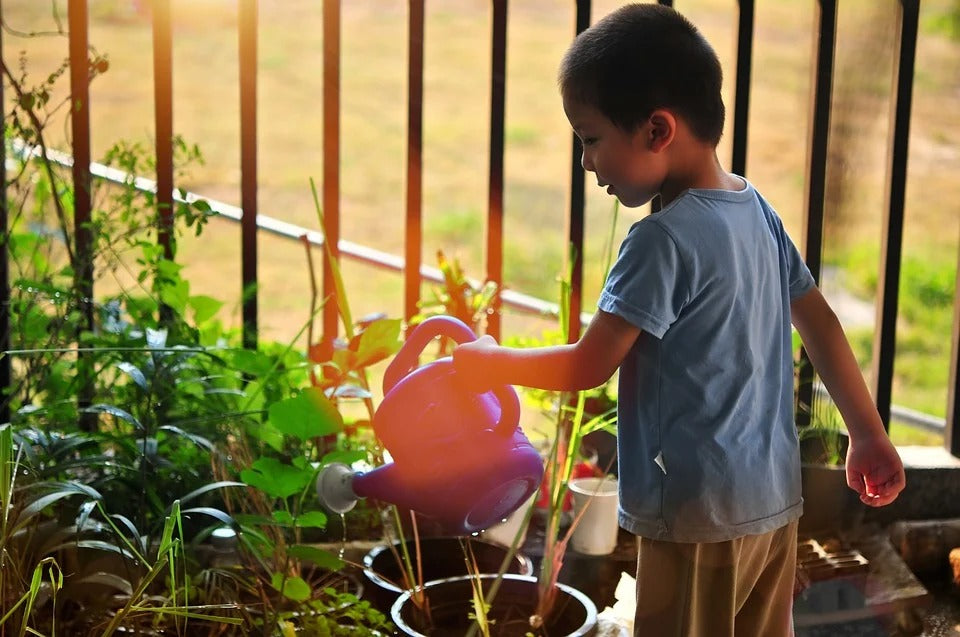URL: https://cdn.pixabay.com/photo/2018/04/20/08/43/tree-3335400_960_720.jpg
A vital component of every educational activity is a contemplation of nature. It helps children feel, understand, appreciate, and, most importantly, create beauty. Thus, it’s necessary to do everything to make the educational building and its territory attractive and magical. Every square meter should work for this mission. And the creation of a school garden will be the best solution. This article will tell you how to make the perfect aesthetic appearance for such a corner of nature.
A Quick Overview Of History
And it all started in the Philippines. Since 1994, the grounds of many schools have delighted the eye with their beauty and fragrance of flowers and fruits. Working outdoors is a great alternative to daily indoor activities. In addition, students can enjoy the results of their work: relaxing in the trees’ shade, getting fruit and vegetables rich in vitamins.
If we go back even further in history, we can see the widespread use of school gardens during the Victorian era in England. Suzi Teghtmeyer, a librarian from Michigan State University, has built up a fantastic collection of primary documents referring to the gardening school from the late 1800s to the present day.
All experts now recognize the importance of supporting children in the open air. It positively affects their health, widens the educational base, and provides valuable industry learning experiences. As a result, a massive gardening movement is sweeping across America. If you want to delve even deeper into the history of school gardens, you can order a paper devoted to this topic on one of the top writing review services presented by Rated by Students.
Key Advantages
Environmental education is one of the main activities of schools. The educational institution’s leadership should create a system of continuous ecological education for students who will participate in practical activities aimed at caring for nature. It’s precisely the function of the school garden.
In addition, it allows teachers to grow in students an active life position and develop the abilities of artists, designers, gardeners, and explorers. Thus, green spaces create favorable microclimatic and sanitary-hygienic conditions, form a natural environment, contribute to the school territory’s functional organization, and have aesthetic value.
Also, consider the other key advantages of creating a school garden:
- deep knowledge about the role of green spaces as a means of protecting the atmosphere from pollution;
- show the types of landscape design;
- introduce the basics of floriculture and methods of plant cultivation;
- form a sense of beauty due to nature;
- develop creative thinking, research, and communication skills.
The Theme Matters
A themed focus will make the school garden more inviting and exciting and offer many creative and critical thinking opportunities. Also, it’s possible to try a new one with the arrival of each new school year. And it’s worth noting that there are no strict rules for creating school gardens. Nevertheless, many of them adopt a specific theme. If you need help coming up with such ideas, you can use the Top Writing Reviews essay review service.
In general, a school may have several smaller gardens, each with its purpose, for example:
- bumblebee garden
- vegetable garden
- rosary
- garden of flowers
Or even their combination, depending on the purpose of garden landscaping. As usual, the task of creating a garden falls mainly on the shoulders of concerned teachers, administrators, and parents who are willing to take responsibility for its overall maintenance. However, if you’re worried that you’ll be the only person who wants to improve the school grounds, you can use this information to get more people on your side. In the next paragraph of this article, we’ll tell you how to make up a committee of volunteers in detail.
How To Start A School Garden
Starting a school garden begins with forming a committee of volunteers. It’s best if the committee has a few people familiar with gardening and people who can organize the financial support for the project. After that, it's time to define the goals of the garden.
Next, be ready to answer the questions on the use of the garden and the possibility of a teaching garden. These goals will allow you to create lesson plans related to the garden, a valuable teaching resource. Work with your garden technicians to find the best place for your garden, and don't forget things like a small tool shed, drainage, and sunlight.
Then, schedule a garden design and list all the necessary equipment, including species of plants and landscape elements you want to include in your garden. Consider approaching the local business, especially in the gardening industry, for assistance in obtaining cost-free or discounted materials and plants. Don’t forget to arrange for summertime supervision of the garden when the children are not in school.
Top 5 Vegetables Easy To Plant
We have compiled a list of great vegetables for your school garden. Their planting does not require any special knowledge and skills, but the results will please the children.
✔️ Spinach contains fiber, organic acids, vitamins B, C, E, P, PP, K, potassium, magnesium, and iron. So it’s handy for the young body. But be careful, as spinach is very popular with slugs and snails.
✔️ Radish proliferates and is ready to eat in a month. Thus, it’s a great benefit.
✔️ Carrots also grow fast, but there’s a slight difficulty. Tiny seeds are challenging to deal with planting. But you can find an alternative: use carrot seed ribbons.
✔️ Broccoli. Perhaps the only option to instill in children a love for this helpful vegetable, get them to grow it themselves.
✔️ Oriental greens. It’s better to do the planting in cool weather to germinate faster.
Conclusion
Anyone trying to set up their school garden is bound to have several issues to solve. The main of them is the search for necessary planting materials. But, in general, using appropriate literature, the experience of gardeners, and considering the peculiarities of weather and soil, you can create a beautiful school garden under any conditions and any size of the territory.
Author Bio: Frank Hamilton

Frank Hamilton has been working as an editor at essay writing service Trust My Paper. He is a professional writing expert in such topics as blogging, digital marketing and self-education. He also loves traveling and speaks Spanish, French, German and English.
































